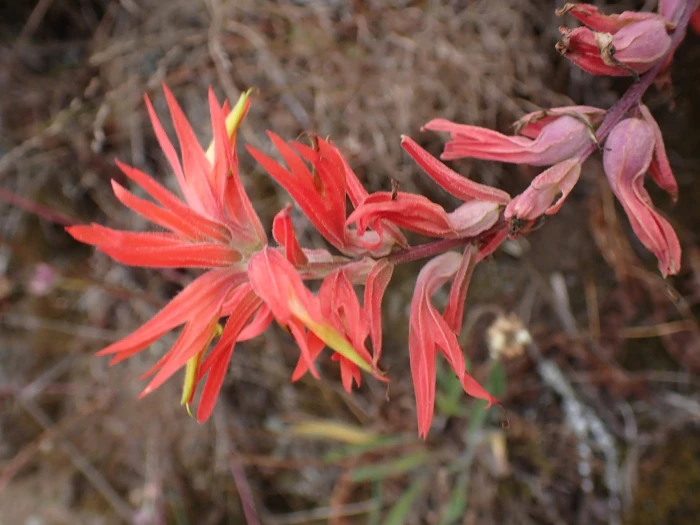Longleaf Indian Paintbrush
(Castilleja subinclusa)
Longleaf Indian Paintbrush (Castilleja subinclusa)
/
/

© Cricket Raspet
CC BY 4.0
Image By:
© Cricket Raspet
Recorded By:
Copyright:
CC BY 4.0
Copyright Notice:
Photo by: © Cricket Raspet | License Type: CC BY 4.0 | License URL: http://creativecommons.org/licenses/by/4.0/ | Uploader: chilipossum | Publisher: iNaturalist |














Estimated Native Range
Climate Requirements for Eagle Pass, Texas
| This Plant | Your Site | Plant Suitability for Your Location | ||
|---|---|---|---|---|
| • Precipitation | 6" - 54" | 21" | Your precipitation may be too high for this plant. | Too high |
| • High Temp. | 68°F - 99°F | 98°F | Your summer temperatures are normal for this plant. | Excellent |
| • Low Temp. | 19°F - 47°F | 41°F | Your winter temperatures are normal for this plant | Excellent |
This plant may not grow well at your location - your precipitation is too high.
Summary
Castilleja subinclusa, commonly known as Longleaf Indian Paintbrush, is a perennial herb native to California and Baja California, where it is found in a variety of habitats including chaparral, coastal sage scrub, and open woodlands. It can exceed 3 feet in height and has a spreading habit with gray-green to purple hairy foliage. The plant is particularly noted for its striking inflorescence, which can reach up to 16 inches long, featuring bright red-orange to deep red bracts with inconspicuous lighter flowers that bloom from April to July. The showy bracts are often mistaken for petals, making the plant a standout in its native environment.
Longleaf Indian Paintbrush is valued for its vibrant color and unique appearance, which can add interest to native plant gardens, wildflower meadows, and restoration projects. It is adapted to well-drained soils and requires little water once established, making it suitable for xeriscaping. It prefers full sun to light shade. While generally low-maintenance, it is a hemiparasitic plant that obtains some nutrients from the roots of neighboring plants, which should be considered when planting. There are no known subspecies of Castilleja subinclusa that occur together, and it does not typically present major disease problems. However, it may not compete well with aggressive plants or in overly fertile soils.CC BY-SA 4.0
Longleaf Indian Paintbrush is valued for its vibrant color and unique appearance, which can add interest to native plant gardens, wildflower meadows, and restoration projects. It is adapted to well-drained soils and requires little water once established, making it suitable for xeriscaping. It prefers full sun to light shade. While generally low-maintenance, it is a hemiparasitic plant that obtains some nutrients from the roots of neighboring plants, which should be considered when planting. There are no known subspecies of Castilleja subinclusa that occur together, and it does not typically present major disease problems. However, it may not compete well with aggressive plants or in overly fertile soils.CC BY-SA 4.0
Plant Description
- Plant Type: Herb
- Height: 1-2.5 feet
- Width: 0.5-1.5 feet
- Growth Rate: Moderate
- Flower Color: Green, Pink, Purple, Red, Yellow
- Flowering Season: Spring, Summer, Fall
- Leaf Retention: Deciduous
Growth Requirements
- Sun: Full Sun, Part Shade
- Water: Low
- Drainage: Medium, Fast
Common Uses
Bee Garden, Bird Garden, Butterfly Garden, Drought Tolerant, Hummingbird Garden, Low Maintenance
Natural Habitat
Native to chaparral, coastal sage scrub, and open woodlands in California and Baja California
Other Names
Common Names: Longleaf Indian Paintbrush, Desert Paintbrush
Scientific Names: Castilleja subinclusa, Castilleja exserta, Castilleja subinclusa subsp. subinclusa
GBIF Accepted Name: Castilleja subinclusa